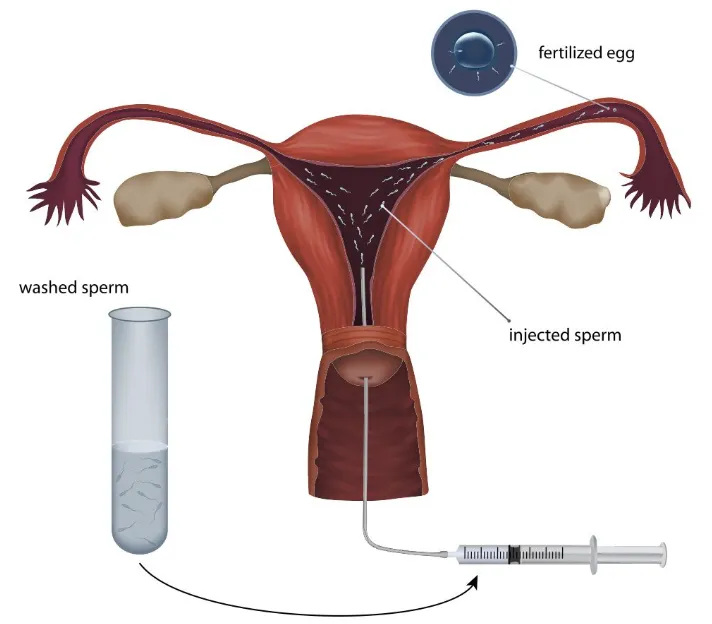For individuals or couples exploring home fertility options, ICI insemination at home—short for intracervical insemination—offers a private and low-intervention way to try to conceive. This method mimics what happens naturally during intercourse by placing sperm near the cervix, where it can travel through the reproductive tract to meet the egg. When performed correctly and under the right conditions, ICI insemination at home can be a safe and effective alternative to clinical procedures.
Understanding how ICI insemination at home works, what you need to prepare, and how to stay safe during the process is essential for improving your chances of success.
What Is ICI Insemination?
Intracervical insemination (ICI) is one of the simplest forms of assisted conception. It involves placing sperm at the entrance of the cervix using a syringe or other sterile applicator. Unlike intrauterine insemination (IUI), which requires inserting washed sperm directly into the uterus, ICI uses unwashed sperm and does not involve any clinical intervention.
ICI insemination at home is particularly appealing because it allows people to conceive in a relaxed, familiar environment without visiting a fertility clinic. However, it’s important to follow proper hygiene and timing guidelines to increase safety and effectiveness.
Preparing for ICI Insemination at Home
The foremost and most essential factor before embarking on ICI insemination at home entails the right ovulation tracking. The right timing for insemination is typically on your fertile window i.e. for the first basically about a few days and during ovulation. The ovulation can be gauged through the operational function predictor kits (OPKs), basal body temperature charting, or digital fertility monitors.
After pinpointing your fertile window, you should gather all the required materials. Generally, this includes a sterile syringe (the kind without a needle), a clean specimen cup to hold the sperm, gloves, and potentially a soft menstrual cup that can be placed in during the insemination process to keep sperm as close to the cervix as can be.
In case you are using donor sperm from a sperm bank, make sure to thoroughly observe the bank’s instructions concerning the thawing process of the sample. When using sperm from a known donor, ascertain that the sample is fresh and also has gone through a medical screening. Regardless of the source that’s being utilized, it is paramount that cleanliness and timing are observed when carrying out the ICI insemination at home.
The Intra-Cervical Insemination Procedure
Doing the ICI insemination procedure at home is easy but being cautious is of big importance. After collecting the sperm sample and letting it back to room temperature, draw it into the sterile syringe. Then, lying on the back with the hips slightly elevated, gently insert the syringe into the vaginal canal and release the sperm near the cervix.
You should remain lying down for about 15 to 30 minutes after the insemination. This way, gravity would help the sperm go through the cervix and into the uterus. Some people prefer to insert a soft menstrual cup afterward to keep the sperm in place, even though this is optional.
If the fertile window allows, repeat the process which is necessary during; as several attempts can boost the conceiving probability. Rushing the ICI insemination at home is utterly out of the question; sticking to the right pace and instruction increases the shot of success.
Advice on Safety and Best Practices
Although ICI insemination at home can be a low-risk and safe option, there are some key safety issues worth mentioning. Utilize sterile equipment alongside handwashing before any supplies are handled. Avoid syringes or containers being reused, and, moreover, never insert anything into the vagina that is not intended for a specific medical purpose.
If a known sperm donor is being used, it is recommended that both parties take comprehensive medical screening tests to check for STIs and genetic conditions. A legal agreement may also be needed to clarify the rights and responsibilities of the donor.
Remember to speak with a healthcare professional before starting the process. Even if ICI insemination at home is what you are implementing, a doctor can be of assistance by providing you with guidance on your fertility issues, help you in tracking your ovulation and offer recommendations if the method is not successful even after several cycles.
Summary
Home ICI insemination stands as a viable and empowering approach for individuals or couples who want to conceive away from the typical clinical invocations. With thorough preparation, understanding of timing and safe handling of sperm samples, this method proves to be a powerful and effective way to parenthood. ICI insemination at home, while not a sure bet, has many people the opportunity to decide their personal and meaningful way of the fertility path. Should you think of trying this, being well-informed and prepared will increase your chances of success significantly.








